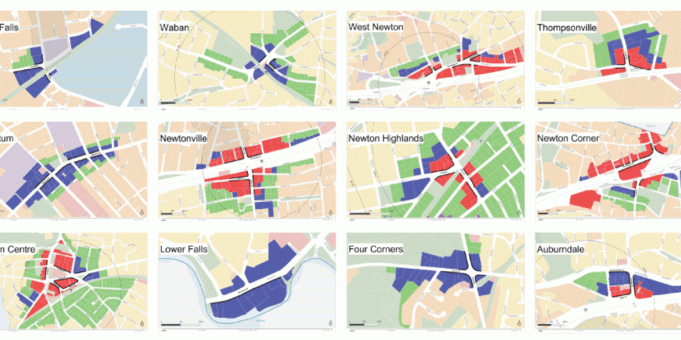The Village Center Overlay District (VCOD) is a proposed set of zoning regulations, the ground rules for what can get built and where something can get built. It is called an overlay because the current zoning remains in place. A homeowner or developer can choose which set of zoning rules to follow – the current zoning or the new VCOD – for new construction or major renovations.
Newton for Everyone has created a webpage of FAQs to answer commonly asked question about the VCOD, and below is the answer on the impact VCOD would have on climate change. Look for this and the answer to many other questions on their website.
How does this proposal address climate change?
“Concentrating economic opportunities, new homes, services, and amenities in existing communities protects and mitigates against sprawl, reduces pollution and greenhouse gas emissions, while creating livable communities.” – Sierra Club Policy
Reduces the number of cars on the road. Allows people to live near transit and walkable villages. The farther people live from public transit the more they rely on cars to go everywhere. No matter how bad you think public transit is in Newton, it is better than none. According to census data, people do drive less, own fewer cars and take transit more often in Newton than people who have to live farther away in order to afford homes.
Preserves trees. Sprawl is the worst enemy of trees. When people have to move farther away from Boston, forests are cleared and open lands paved to make way for more development.
Incentivizes the preservation of homes.
Improves stormwater and flood management. Newton’s stormwater ordinance requires that stormwater be handled on-site.
Helps control urban heat islands. The roofs on new buildings are designed to reflect heat which is an improvement over what existed in the lot before.


Recently on Twitter